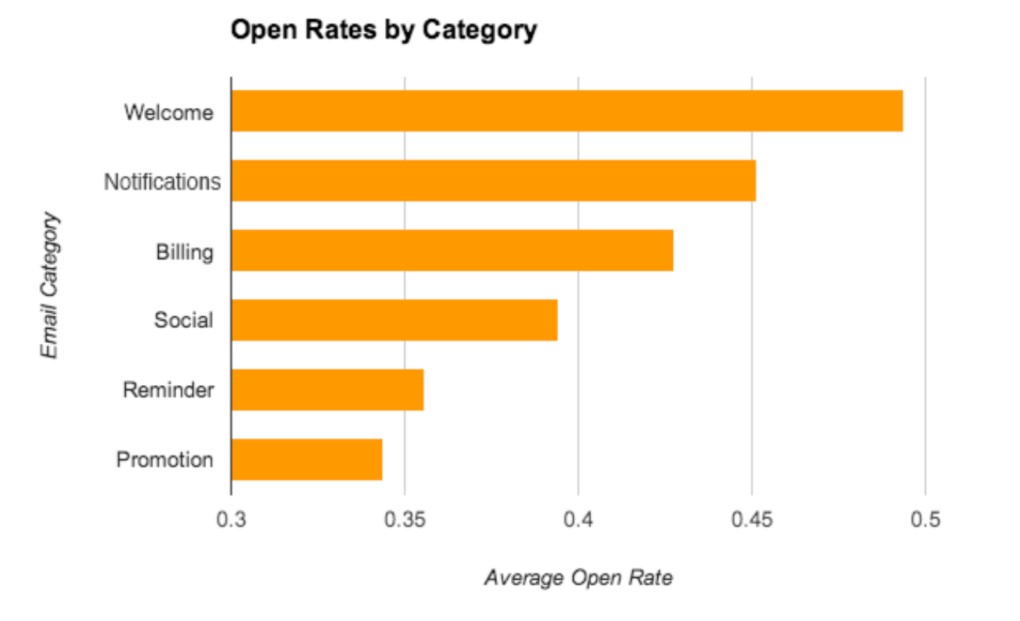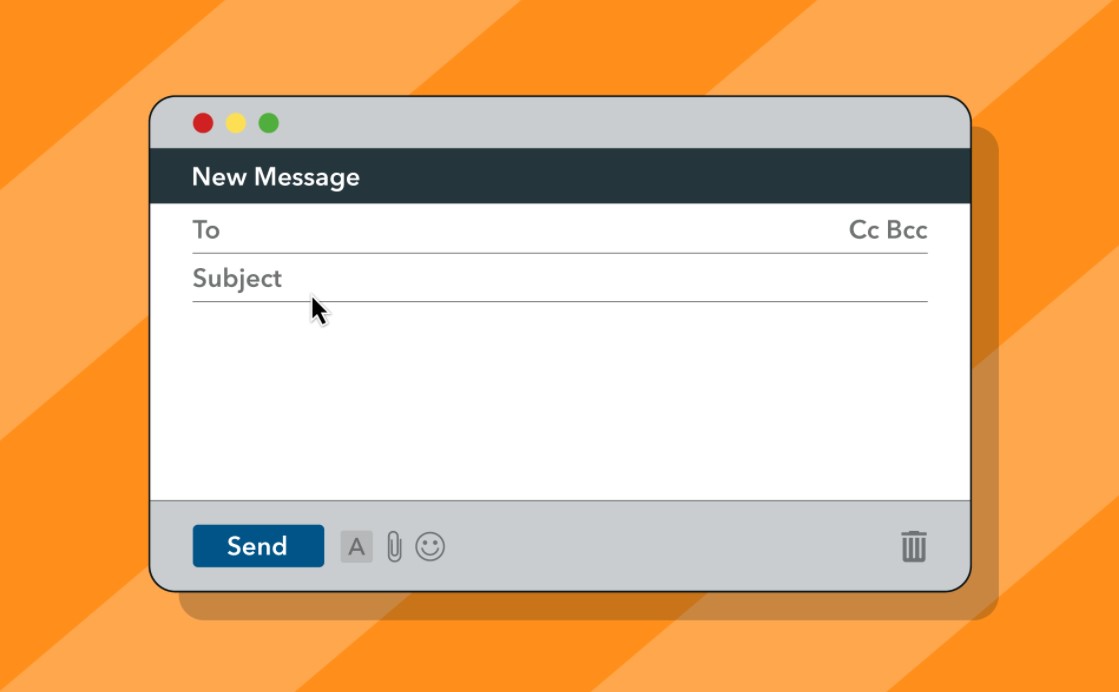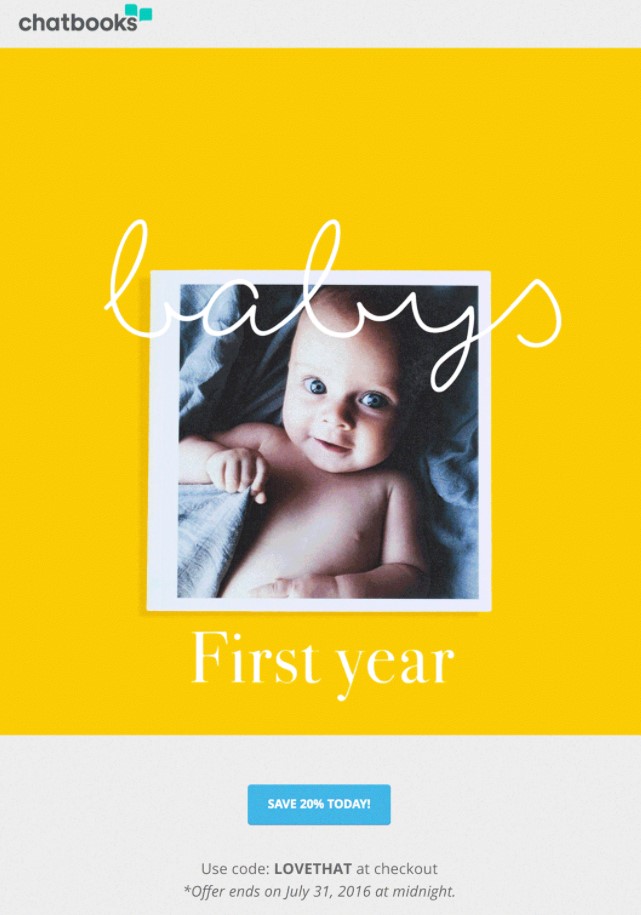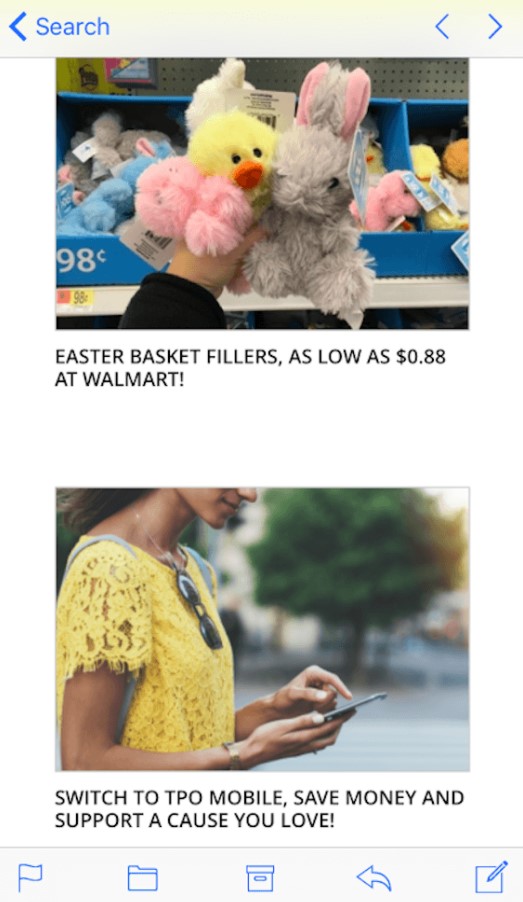16 Email Marketing Mistakes to Avoid
We can all agree that there’s good email marketing, and then there’s bad email marketing. By now, we’re trained to recognize the signs of bad email marketing campaigns, from confusing subject lines, to missing CTAs, and boring or irrelevant messaging.
While your email marketing campaigns may not be bad, most programs out there can do a better job of engaging and converting customers. To help move your email performance meter closer to “good,” and even beyond into “excellent,” let’s look at the 16 most common email mistakes that marketers make.
1. Not making your sign-up boxes obvious
Many websites put one sign-up box in their sidebar and think that is enough. Unfortunately, that approach isn’t going to attract many new subscribers. As a matter of fact, if a visitor is on their mobile phone (as more than 50% will be), they’re probably never going to even see your sign-up box as it’ll be buried below all your content.
In order to get the maximum number of subscribers, you should put your sign-up boxes:
- On your homepage
- In the announcement bar at the top of every page of your website
- At the bottom of blog posts
- Within your blog posts
- On your “About Us” page
- In a dedicated landing page
- In an exit intent pop-up
- In your sidebar
- And anywhere else you can think of
2. Not having an attractive opt-in offer
Sign-up boxes that just say “Subscribe for free updates” will not cut it in 2021.
One of the most popular mistakes that email marketers make is not offering an opt-in offer.
An opt-in offer or lead magnet is a free gift you offer in return for your visitor’s email address. It could be a worksheet, cheatsheet, printable, ebook, free mini-course - anything that solves problems for your readers.
Create a simple freebie you know your target audience will love, and then offer it as an incentive to join your email list, and you’ll see a sharp increase in email list sign-ups!
3. Not welcoming your subscribers
You have just added a new subscriber to your email list. That’s great news!
This person was navigating through your website, making their way to a landing page, seeing your email value proposition, and filling out the form fields required to sign up. They took multiple steps, so clearly, they are interested in your website and brand.
Now what?
If you are not planning to contact them until you send your next newsletter or coupon, you are making a big mistake. Welcome emails should be triggered right after a sign-up. That’s because they have the highest open rates compared to other email categories.

Studies show that welcome emails generate 320% more revenue than other marketing messages. Plus, they have a 336% higher transaction rate and a 196% higher CTR (click-through rate) than any other email you send.
You should take advantage of this. Ideally, you want this subscriber to be engaged with all of your emails down the road. But there is no reason for you to wait. Get them to convert right now by triggering a welcome as the first message in a drip campaign as soon as they sign up.
Read more: 11 Welcome Email Templates That Always Win Your Customers
4. Waiting until you have “enough” subscribers
Don’t wait till you have “enough” subscribers before you start sending out regular emails.
Think about it… your subscribers don’t know whether they’re one of 10 subscribers or 10,000 subscribers. What they’ll notice is whether you send them regular emails or not.
Learn how to craft a good email while you have only got a small audience, then by the time you have a really big audience, you will be good at it.
In fact, only having a small audience will probably help you write better emails. The most effective emails are those that are personal and friendly. You’ll more naturally write this kind of email if you know you’re only writing to 10 people. By the time you have 1,000 or 10,000, or even more, you’ll be used to writing in a natural friendly tone.
In addition, many subscribers share interesting or insightful emails with their peers. By waiting to send out your emails, you are limiting any list growth potential that can come through these types of referrals.
That is why you should start sending as soon as possible, so you’ll learn what your audience likes and dislikes while continuing to grow your list naturally and keep your subscribers coming back for more.
5. Not sending emails strategically
So, how often do your recipients want to hear from you? Not asking this question is another major email marketing mistake.
Sending emails isn’t about guesswork. It is about paying attention to your target audience and segments, listening to their preferences, and then, offering options that cater to them.

Many brands even offer a preference center for their subscribers, allowing them to determine how frequently they receive emails. Once you start gathering this data, you can easily break your list into segments and use automation to follow through, exactly delivering what your customers want.
6. Not segmenting subscribers
If you’ve got a long master email list where every subscriber receives the same content at the same time, you are doing it wrong. This is a huge mistake.
For instance, a subset of your subscribers uses your product far more than others. Meanwhile, you also have a different subset of casual or beginning users. If you send the exact same emails to both groups, you will risk alienating them both with too broad messaging and doesn’t resonate with their specific interests.
By contrast, if you deliver each group personalized emails, you can speak to them on deeper, targeted levels, which can equal more action from them on your CTAs.
Related topics:
- How to Segment an Email List? The Ultimate Guide
- 5 Most-used Customer Segments in Emails
- 10 Persuasive Behavioral Segmentation Examples
- 5 Types of Market Segmentation with Examples
7. Forgetting personalization measures
The best emails can engage the audience. To best engage the audience, it’s essential to create personalized messages. Personalization can mean anything from segmented email campaigns to including a recipient’s name in the subject line.
If you are a small business with a tiny email list, you can take personalization to a deeper level than larger businesses. With people receiving a number of different promotional emails at any time, try catering your message more specifically to the individual groups or people subscribing to your campaigns.
By sending segmented messages with personalized written content, you’ll have a better chance of getting someone to engage with your emails. This gives you more opportunities to convert them into paying customers. Standing out in a crowded inbox requires personalization.
Read more:
8. Writing poor subject lines
It is easy to neglect your email subject lines after spending time and resources crafting a beautiful email. After all, you have optimized the content for results and subscribed to all the best practices for email marketing, so you are sure to see results, right?
If you ignore your subject lines, you could lose out on critical open rates. That means your subscribers will never even see, read, or interact with your emails, regardless of how well they are designed.
That’s terrible for your email marketing as it means a wasted budget and time. Instead, take the time to craft compelling subject lines, so your messages are irresistible from the very moment they hit your recipients’ inboxes.

Some useful tips include:
- Keep it short and sweet
- Eliminate filler words
- Put the most necessary keywords at the beginning
- Stay clear and simple
You might feel interested in:
- How to Write Best Subject Lines for Open Rates?
- The Ultimate Guide for Email Subject Line Testing
- 101 Killing Email Headlines Examples
- 33 Holiday Email Subject Lines and Most Favored Emojis
9. Not using A/B testing
Testing your emails is one of the simplest and best ways to gather data about your audience’s preferences. Once you’ve known what images, designs, text, and CTAs are most engaging to your recipients, you can build on this knowledge to create even more powerful, exciting, and compelling emails.
A/B testing is always going to give you better opt-in rates. If you aren’t doing it, you’re missing a trick!
Learn more:
10. Selling too hard
When sending emails to your audience, it’s vital to first understand why you’re emailing them. You want to get something out of the relationship, whether increased sales or website traffic, but you still need to foster a relationship with your customers.
If you try to sell your products in every email, your customers are going to become disengaged. So, try to find a balance between product offers and helpful content.
Sharing ideas and tips lets you engage customers through content marketing. By doing so, you can bolster your position as an industry expert while gaining trust and building healthy relationships with customers. This will lead to higher open rates and improved conversion rates.
11. Not including a clear CTA
You must make it clear what you really want your subscribers to do after they’ve read your email.
Do you want them to head over to your blog to read more? Sign up for something? Download something? Buy something? Or reply to you?
That’s why all your emails should include a clear CTA (call-to-action). If you give your subscribers a clear CTA, they’re much more likely to do it.
For example, in this email from Chatbooks, the ultimate goal is to get customers to make a purchase. So, the company generates a coupon code to help spur people to this action, and they used that enticement as the CTA text (“Save 20% Today”)

12. Using too many images
Your first instinct might be to load up beautiful, eye-catching, professional images that will excite your readers.
While this is not wrong in and of itself, it’s critical to note that many of your readers may view emails with images turned off. If you don’t have an available plan B, you are missing these clients altogether.
That doesn’t mean you shouldn’t use images at all. It means that you need to be a little more careful with how you use them. If you employ proper “Alt text,” your viewer will still be able to get a good idea of what your email is about even if the images don’t load.
“Alt text” is the text that will replace an image if it fails to load or is blocked by the service. It is placed by using the “alt=” tag inside HTML code for the image; however, the best email marketing services will let you add “Alt text” without the need to know HTML code.
Nevertheless, even if you are using “Alt text,” an email with a bunch of large empty boxes with just a few lines of text is not going to come across well to your audience. So, so easy on images and ensure that all of the truly important messages come through somewhere in plain text, so your readers won’t miss them.
Read more: How to Master Using Images on Email Marketing?
13. Hiding the unsubscribe link
Just don’t.
Believe it or not, unsubscribers are a good thing.
You want your messages to go to the right people, right? When someone has unsubscribed, that means they are the wrong people. By unsubscribing, they’re not interested in your brand anymore.
And, of course, you don’t want people who aren’t interested striking around on your list as dead weight, pulling down your open/ click rates, and affecting your deliverability rates, especially when you’re paying for them!
Therefore, try to make your “Unsubscribe” link easy to find.
14. Ignoring mobile users
Keep in mind that most subscribers will be reading your emails on their phones in most cases. If you don’t ensure your audience can read your emails on their mobile devices, you are making a very expensive mistake.
Actually, formatting for mobile devices should be simple and clean, with text and images that are easily readable on a small screen. Keep your content to a single column, and use images that are no wider than 600 pixels.
Don’t fly blind! Test your emails on mobile devices to make sure that they are coming across the way that you want them to.
Below is an email from The Krazy Coupon Lady:

As you can see, the text is nice, readable with clear images and generous white space.
15. Not cleaning your email list
Over time, you’ll collect subscribers that never open or click on your emails, people that just hit the “delete” button when they see your email, or who never see it at all because it always lands in their junk mail.
There’s no point in having people like that in your email list. If your email list isn’t bloated because you have a huge percentage of inactive subscribers, that won’t help your bottom line.
What does help your bottom line? Interested, active, and engaged subscribers.
Therefore, it’s essential to regularly clean your email list. By doing so, you’ll be left with the true fans of your brand.
Here are some best practices when you clean your email list:
- Remove/ Fix email addresses with typos
- Remove duplicate email addresses
- Remove/ Update invalid email addresses
- Delete emails from hard or soft bounces
16. Ignoring GDPR, CAN-SPAM Act, and other anti-spam laws
With anti-spam laws like GDPR, CAN-SPAM Act, and others, email marketers have a lot to comply with to be on the right side of the law.
They must:
- Prove that subscribers have given their explicit consent to be contacted
- Include a valid physical address in their emails
- Add an “Unsubscribe” link
- Other requirements
They have to ensure that their emails will be delivered to the recipients’ inbox (instead of being marked as spam), while avoiding being hit with hefty fines for violating all those anti-spam laws.
You should read:
- GDPR Email Marketing: Everything You Need to Know
- DMARC Policy: Know It Before Your Emails Land to Spam Boxes
The bottom line
Email marketing is still alive and thriving. And everyone needs to make this a priority.
After reviewing this guide, you might have realized some mistakes you’re making.
But don’t worry! These common mistakes are quite easy to correct.
Identifying them is the most challenging step. But now that you know what needs to be done, you can make necessary adjustments and apply the changes to your email marketing strategy moving forward.
New Posts






